Abstract
Rats have been exposed for varying periods to an atmosphere containing 1 mg./cu.m. mercury vapour. The toxic effects produced showed resemblances to signs of mercurialism in man. An attempt has been made to study the kinetics of absorption and excretion of mercury from measurements of the amounts excreted and stored in the tissues.
The efficiency of absorption of mercury by the rat lung is about 50%. A small proportion is excreted into the gut. After about 10 days of continuous exposure a steady state is reached in which excretion balances absorption. During short exposures the turnover of mercury in all tissues except brain is fairly rapid and most of the mercury is cleared from the body within a week after exposure. The urinary excretion of mercury, during the initial stage of storage in the tissues and the final stage of clearance, shows divergencies from the simple exponential pattern; there appears to be a delay mechanism in the kidney which, in intermittent exposures, may result in the occurrence of peak excretion during periods of non-exposure. After more prolonged exposures the mercury in the kidney appears to be converted to a form which is only very slowly excreted.
The significance of the urinary excretion of mercury by man after industrial exposure to mercury vapour is discussed. The rat experiments suggest that single measurements will give only limited information concerning industrial conditions, but that an approximate assessment of the total absorbed during a working week would be obtained if it were possible to make a seven-day collection of urine. Repeated measurements after exposure would yield information on the duration of exposure and would have some diagnostic value.
Full text
PDF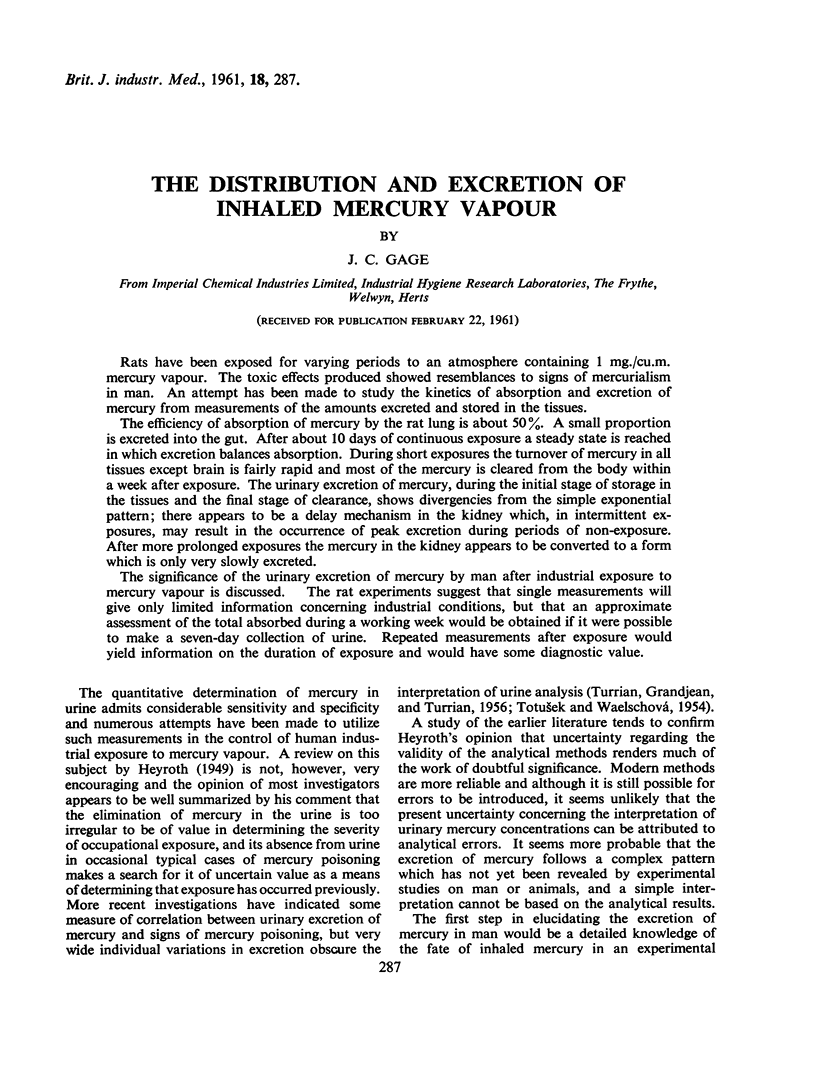
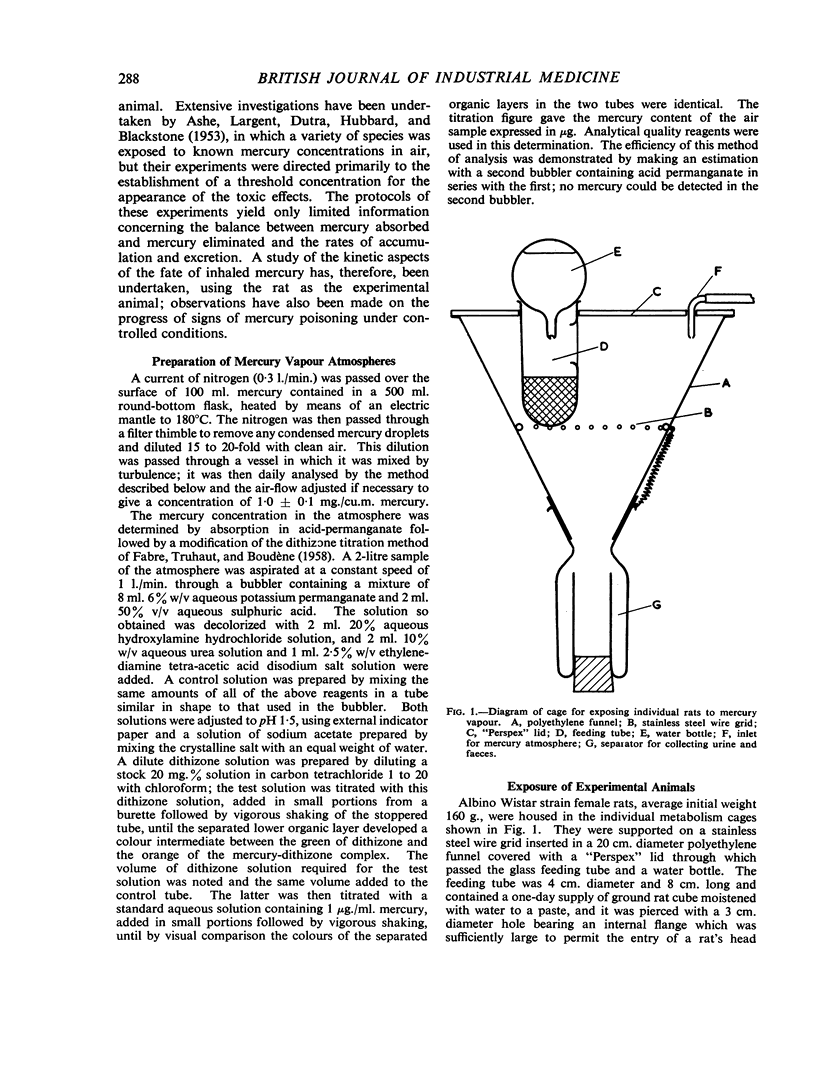
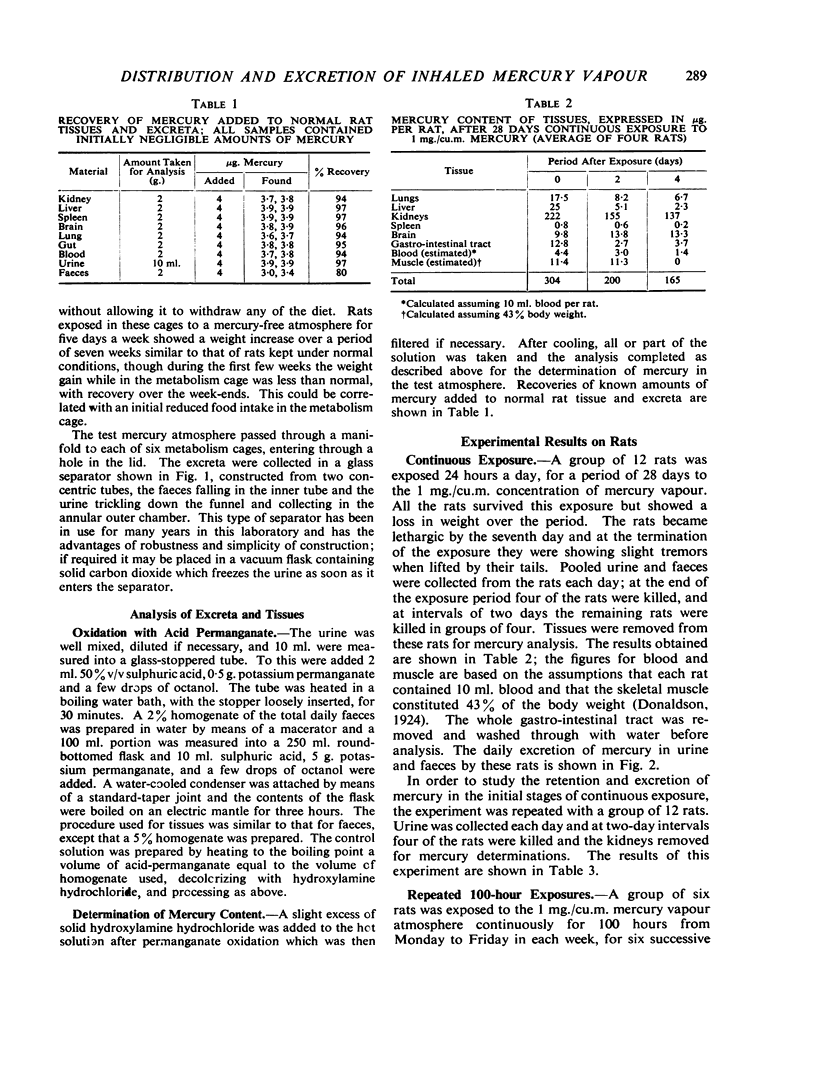
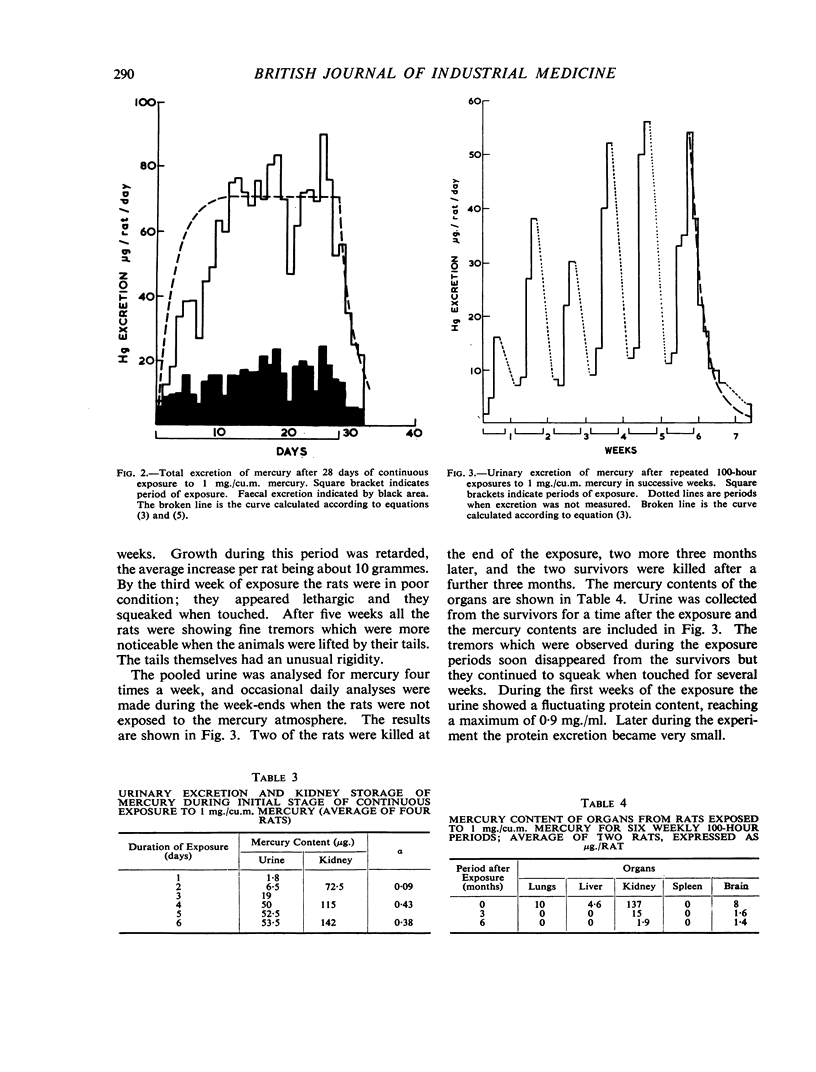
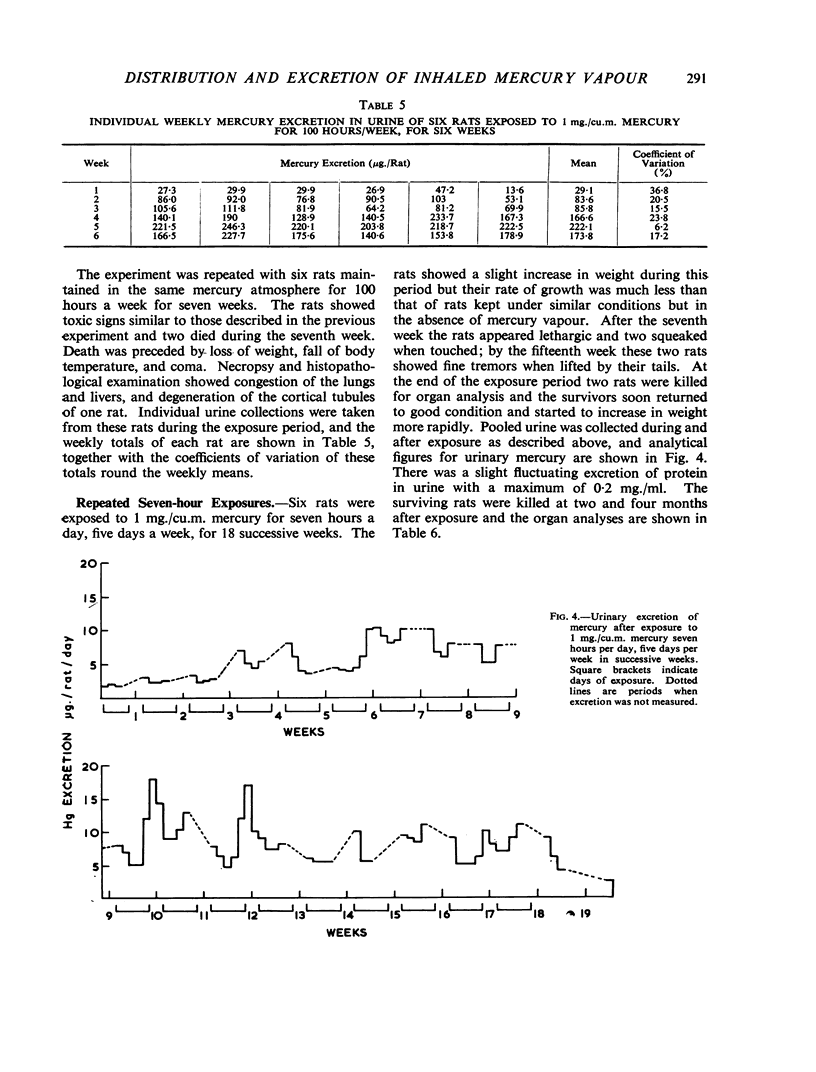
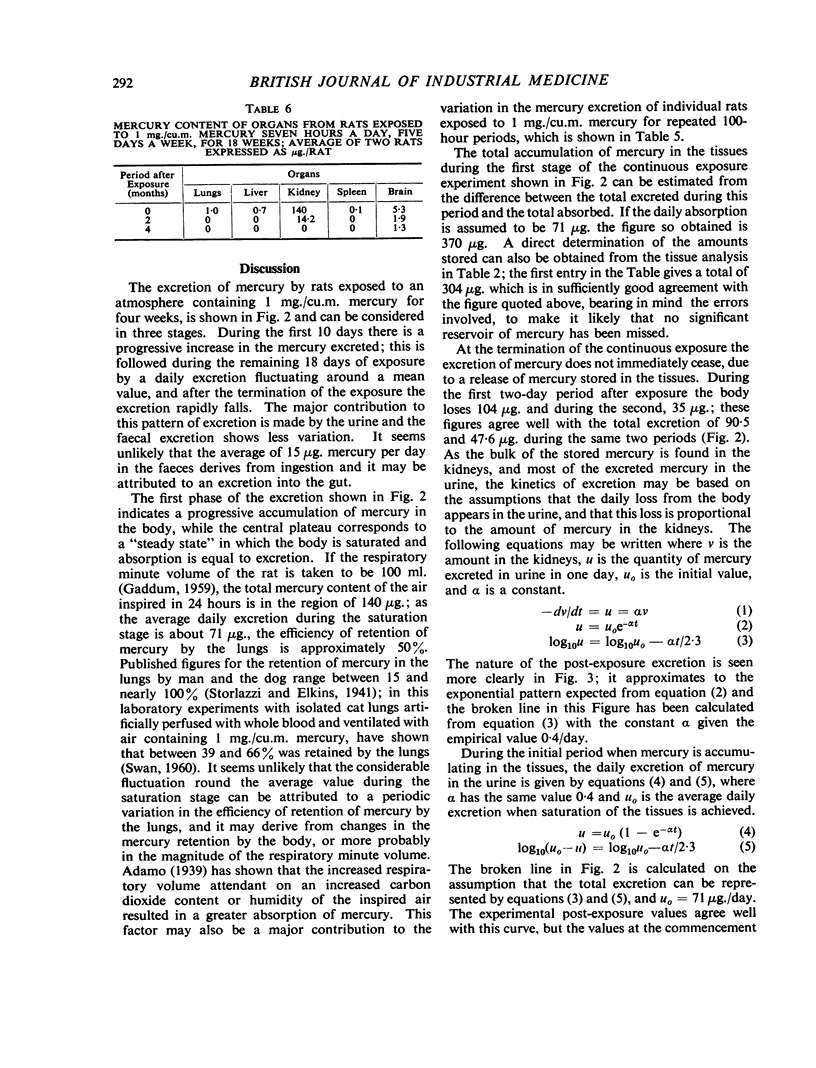
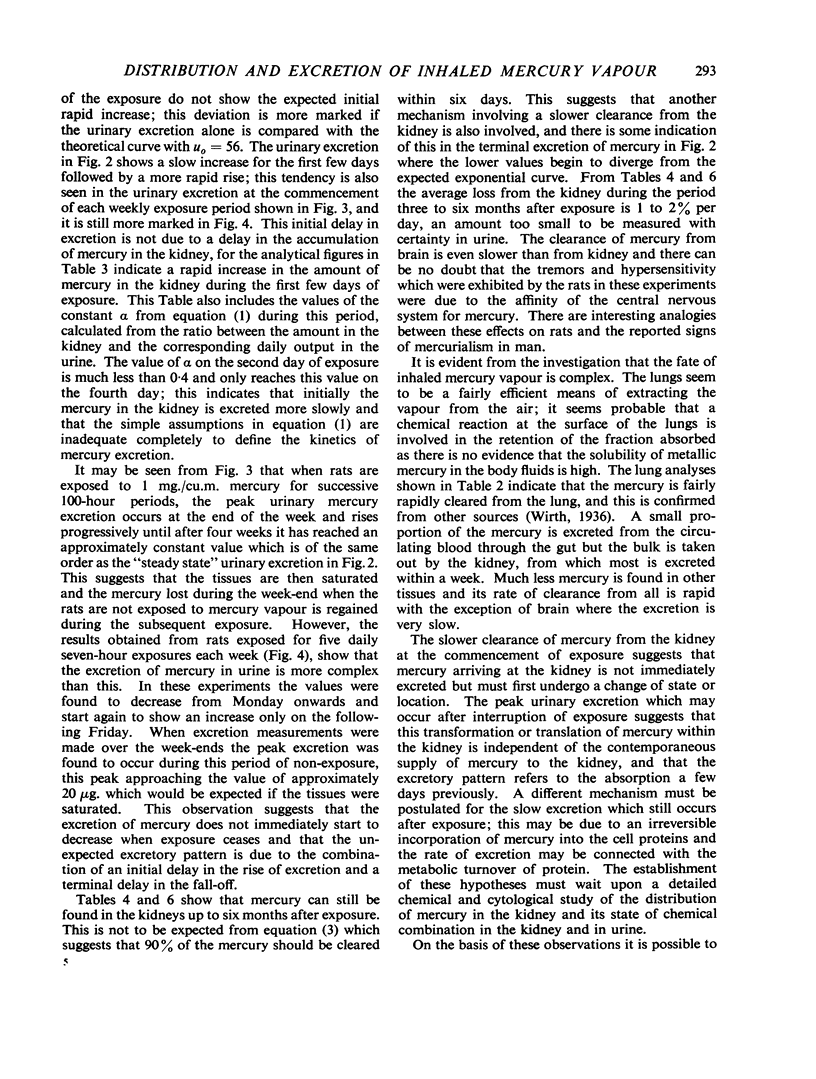
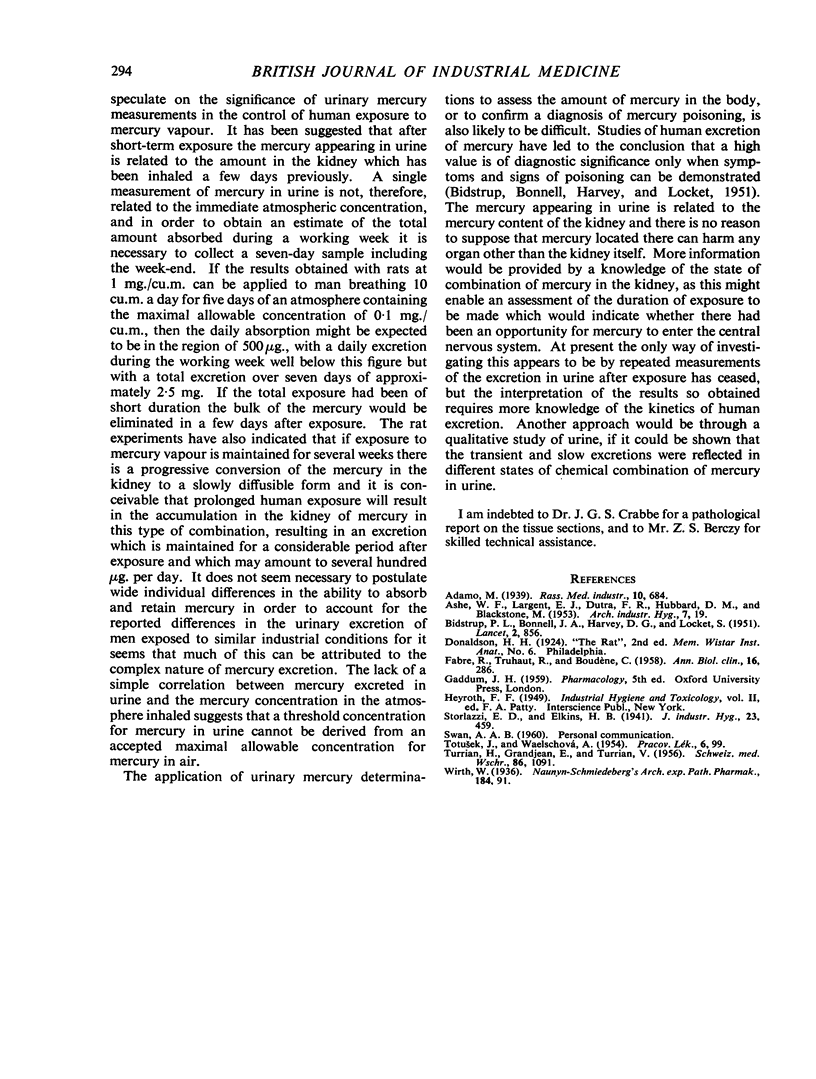
Selected References
These references are in PubMed. This may not be the complete list of references from this article.
- BIDSTRUP P. L., BONNELL J. A., HARVEY D. G., LOCKET S. Chronic mercury poisoning in men repairing direct-current meters. Lancet. 1951 Nov 10;2(6689):856–861. doi: 10.1016/s0140-6736(51)91825-9. [DOI] [PubMed] [Google Scholar]
- FABRE R., TRUHAUT R., BOUDENE C. Microdosage du mercure dans l'urine. Ann Biol Clin (Paris) 1958 May-Jun;16(5-6):286–298. [PubMed] [Google Scholar]
- GRANDJEAN E., TURRIAN H., TURRIAN V. Industriehygienische und medizinische Untersuchungen in Quecksilberbetrieben. Schweiz Med Wochenschr. 1956 Sep 22;86(38):1091–1096. [PubMed] [Google Scholar]
- TOTUSEK J., WAELSCHOVA A. Význam komplexnäho vy6set6renä pracujäcäch ve rtu6tových provozovnách. Prac Lek. 1954 Apr;6(2):99–102. [PubMed] [Google Scholar]


